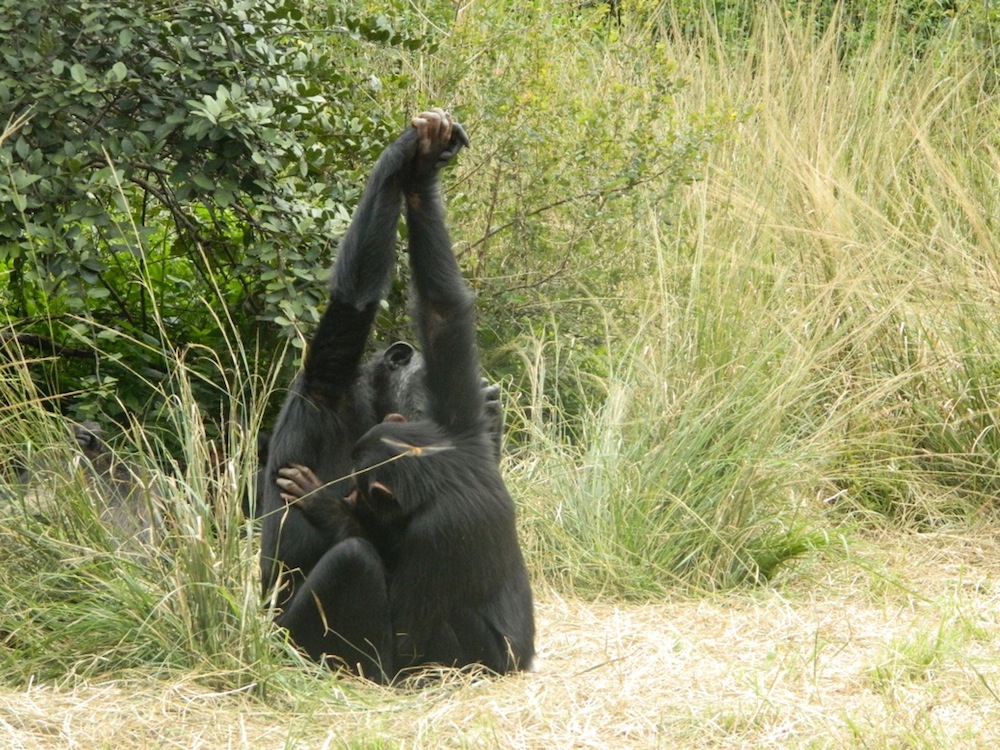When you buy through links on our site , we may earn an affiliate commission . Here ’s how it works .
When you burrow under your blankets and snuggle up to your pillow in bed , you ’re never alone — the trillions of microbes that make up your microbiome are correct there with you , and many of them are left in your seam even when you are n’t there .
As it turns out , human beds are teeming with more body microbes than the beds of chimpanzee , allot to a newfangled subject .

Think your bed is ‘cleaner’ than a chimpanzee’s? Think again.
investigator recently investigated the microbic communities in chimps ' Sir Herbert Beerbohm Tree bed , to well understand their relationship with the bug and arthropods that inhabit their bodies and their forest habitats . In doing so , they made an unexpected discovery : Body microbes that were plentiful in human beds were mostly absentminded inchimp nests . [ Microbiome : 5 Surprising Facts About the Microbes Within Us ]
Of the germ in our beds , about 35 percent come from our own body , " including fecal , oral and hide bacterium , " study star author Megan Thoemmes , a doctorial candidate at North Carolina State University , saidin a statement .
" We want to know how this compares with some of our closest evolutionary congenator , the chimpanzees , which make their own bottom daily , " Thoemmes added .

Chimpanzees ( Pan troglodytes ) spend more than half their livesin their nests , and they rely on these beds not only for prosperous sleeping , but as protection against current of air , rain and marauder , the study source cover . To make these cozy nest , which are typically used once and then abandoned , Pan troglodytes weave together a foundation of branch , crown them with a leafy mattress .
The researchers suspect that these bed also hosted mass of germ , from the Pan troglodytes ' own physical structure and from the forest around them . They swab 41chimp bedsin western Tanzania ’s Issa Valley to collect samples of their microbic diversity , and they hoovered up arthropod — insects and arachnid — from 15 nests .
Based on the make out bacterial opus of human beds , the scientist look to see a standardized dispersion of microbes in the chimpanzee nest , anticipating that the microbic variety would be somewhat gloomy than in the environment around them , and that trunk bug would be significantly represented .

Instead , they found that environmental bacteria dominated the nests , while the unwritten , skin and faecal bacteria that are so common in human bed were " almost entirely lacking " in chimpanzee beds , the scientist reported . In fact , none of the five most vulgar species offecal bacteriain chimps was found in any of the nest .
By comparability , our own living spaces , which are largely isolated from the microbes in the landscape painting around us , are instead dwell by the microbes we produce ourselves .
" To put it simply , we have created quiescency places in which our photograph to soil and other environmental bug has all but disappeared , and we are rather ring by less various microbes that are primarily sourced from our own bodies , " the scientists wrote in the field of study .

The absence of body bacteria in thechimp bedssupports a hypothesis suggested by prior enquiry — that Pan troglodytes ' habits of abandoning their beds provide an important benefit to the primates . By ramp up fresh nest night after night , chimps reduce the likelihood of bacteria and pest buildup , as a dirty nest would be unhealthy for the chimps and could pull in predators , the report authors reported .
The findings were published online yesterday ( May 16 ) in the journalRoyal Society Open Science .
Original article onLive Science .















